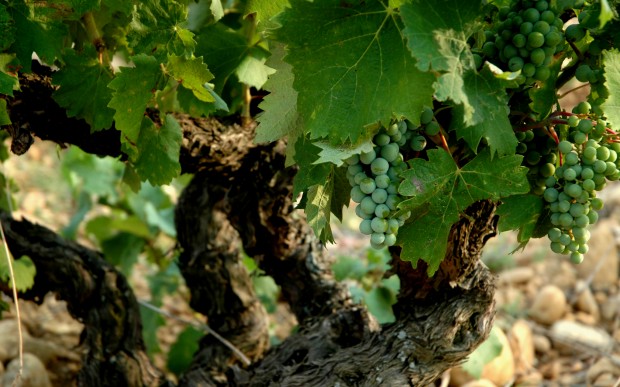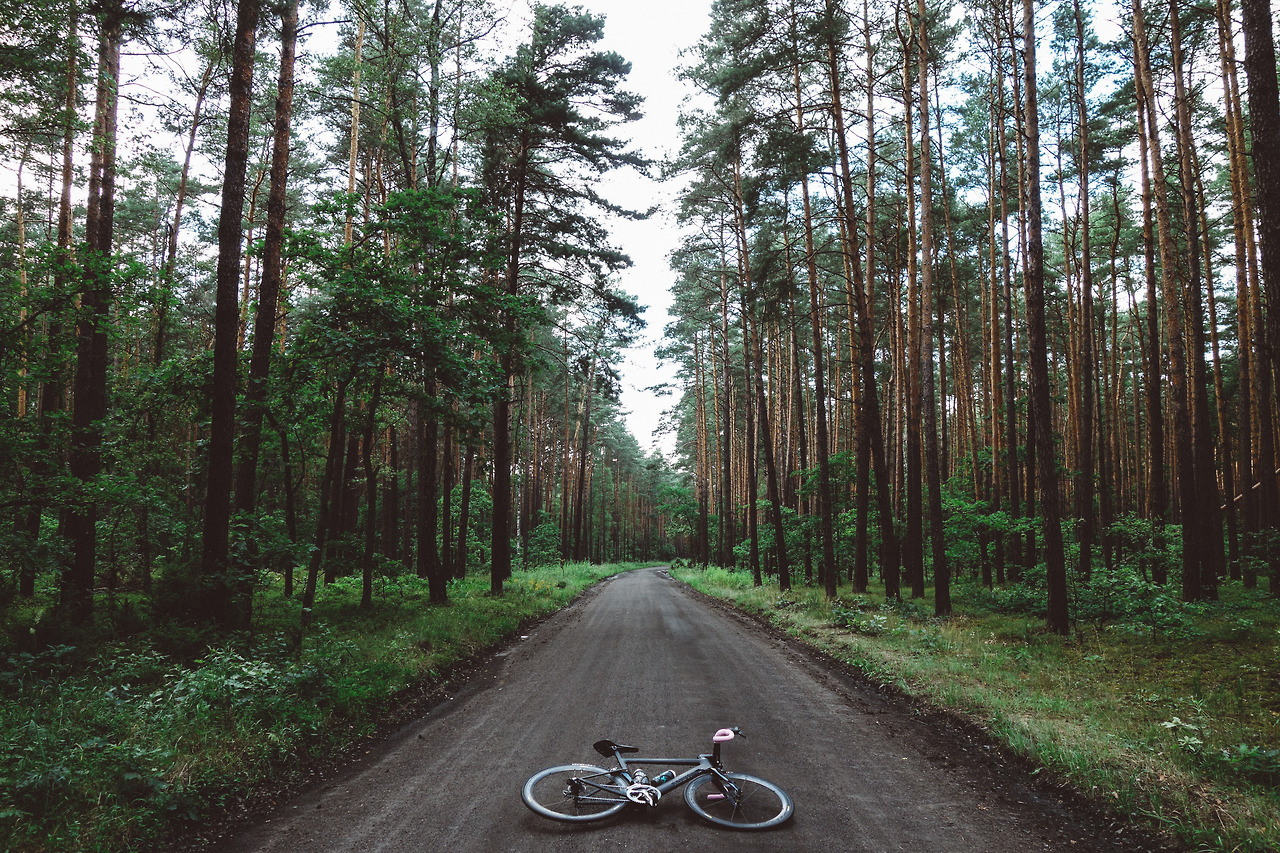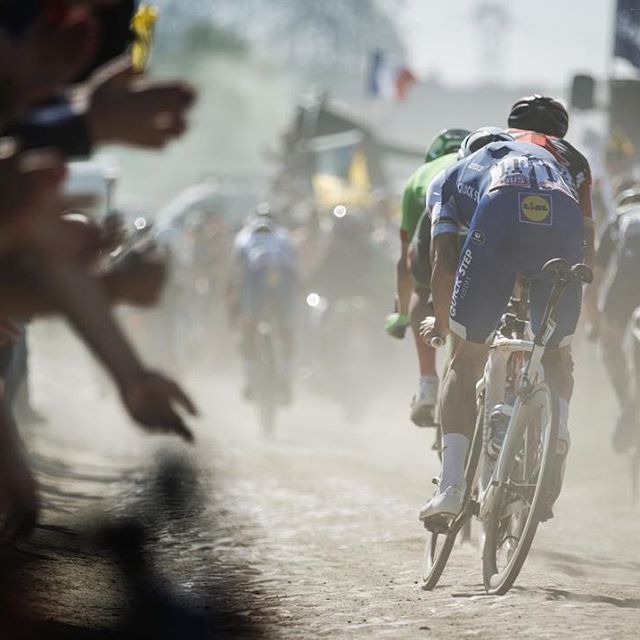The Road Less Travelled

I love wine. I mean, I like beer and scotch and can’t resist ordering a Vesper whenever I pretend to be a gentleman spy, but I love wine. As a semi-professional drinker, the biggest worry I have is that should my as-yet undiagnosed problem with alcohol become a diagnosed problem with alcohol, I’d have to stop drinking wine. A full bodied, well balanced red – not too fruit forward but with a good nose of earth and a long finish – will get my heart racing every time.
And speaking of a good nose of earth, I restrict that strictly to wine; last week’s face-plant while training for cyclocross was taking it a step too far. It’s amazing how a stick positioned in just the right spot at just the right angle can move a much larger object laterally with some ease. Like the Greeks using timber rollers to haul the Trojan Horse to the walls of the city, so my front wheel slid off with surprising speed, sending me to the ground stunned and with a hint of terra firma lingering in my sinuses.
The first thing we think of when we think of having good bike handling skills is someone like Robbie McEwen or Peter Sagan dodging about in the bunch, chasing the best wheels and avoiding crashes in technical finales. Or Sven Nijs avoiding barriers the way I avoid awkward conversations about things like “feelings”. But good bike handling skills are usually much less obvious than that – and much more elemental to having confidence on the bike.
Good bike handling skills are fundamentally about weight distribution and understanding how shifting your weight on the bike will affect the way it reacts to the road. The difficulty with this is that learning how your weight affects the bike involves trial and error, and in this case “trial and error” means “crashing loads”. And for anyone who has crashed a road bike, we all know this involves an empirical study about what happens when a soft surface abraids against a hard rough surface. And also the possibility of motor vehicles and other terribly unpleasant things interacting with said soft surface.
A study in extremes tends to be the most effective tool when examining how subtle weight changes might influence how the rider and machine move together as one. The basic problem with riding on the road is that the surface is so uniform that the opportunity for meaningful study are rare and come with high risks and unpleasant consequences. Which is why riding off road is the secret to becoming a good bike handler and ultimately a better Cyclist. First and foremost, the consequences of being at the bottom of the learning curve are much reduced; speeds are lower and the surfaces are (generally) softer. There are also fewer cars. But mostly, the surface is so erratic that you are constantly forced to experiment with how distributing your weight can influence the way the unit moves together.
Here are a few principles I’ve use when it comes to improving my bike handling:
- Don’t be afraid to crash. Crashing is what teaches us where the boundaries lie and riders who never crash are not finding their boundaries. We’re doing this off road partly because of the lowered consequences of coming off. Embrace it.
- Look where you want to go, not at the obstacles you’re trying to avoid. There is some serious voodoo that goes on with how your body interacts with your sight, so just keep focussed on where you want to be and your body will follow.
- To learn how weight distribution affects traction, find a short, steep hill with some roots and maybe even a few off-camber pitches. Take an afternoon and after you warm up, ride it over and over and over again until you get it right every time. In the dry and then in the wet. You will fall, you will hit your knee. You might even smack your sensitive bits on the top tube or your stem. Its all part of the learning process, so refer to Rule #5.
- Find a web of trees and pick what looks like an impossible path through them. Take an afternoon and try to ride that path as fast as possible. Race a training partner if you have one. Take turns leading and chasing. Try applying the front brake in a really tight turn and continue pedalling; then try it with the rear. Then ride with no brakes. Figure out what works for you and what makes you drop to the ground like a sack of potatoes.
- Find the longest, roughest stretch of flattish trail you can find and spend the afternoon riding it full gas as though you’re riding the cobbles in Northern Europe. Ride it in different gears and try to understand what speed and cadence work best. Figure out how to unload the wheels in quick succession to avoid smashing the rim against something hard and getting a flat.
After a short while, these things become second nature and you don’t even have think about them. The next time you hit the road, you’ll be amazed at comfortable and confident you feel on your machine. And feeling comfortable and confident is the first step towards being Casually Deliberate and Looking Pro.
VLVV.


@frank
Well…..you do have to take the track class where they teach some of those handling skills…and then you have to upgrade a few categories before you can ride the Madison or Miss n out….
28’s? Which ones? I had my nice 25mm Pave CG’s show up at the shop yesteray, but I am probably just gonna stick with my 24mm Corsa SR’s
@frank
I know that pays and the wines of les cailloux well: not just CdP but Gigondas, Vacqueyras, Rasteau etc. Next time you are down this way I’ll have to dig about in the cellar for a couple good bottles. My parents have a place over in Vaison la Romaine on the other side of the Montmirail. Spent 6 weeks there in 07.
@frank
I have to admit it doesn’t always work out. Lost my front wheel on wet leaves on a commute home a few years ago and when down like a sack of proverbial. Took me 2 years of physio and surgery for a SLAP tear to get over that one.
Not sure what bike handling skills would have helped me there.
@frank
That’s where I was going with the comment about letting your elbows and knees filter out the vibrations but you’re right its more than that. It’s sometimes about only maintaining the minimum contact with the bike to be able to change direction and keep the cranks turning. You have to learn to let the bike do it’s own thing underneath you, rather than to hang on to it and wrestle it into submission.
Its massively counter intuitive in the same way that releasing the brake and trusting the tyres to hold when you think you’ve taken too much speed into a corner can be.
I wouldn’t say my bike handling is great but having learnt to ride motorbikes off road and spending a few years riding downhill bikes has certainly helped.
@RobSandy
Possibly none apart from crashing skills. The more you crash the better you crash.
@Nate
mmm… Gigondas I like a lot although I prefer Bordeaux or Madiran.
I’m also rather enjoying a bit of this at the moment (and not just for the label – the producer, Some Young Punks, has a bunch of great labels)
@Chris
A lesson learnt – I had a similar crash a month later, where I was completely unhurt.
The difference? The first crash, I put my hand out. The 2nd, I kept my hands on the bars and landed on my shoulder.
Don’t put your hand down!
I can’t comment on mtb skills or the like but I do think it has something to do with knowing what to do with your centre of gravity. I learnt to ride horses when I was very young and with all the sporting, jumping and fanging around we did you learnt to know where to lean and how far your could push into corners. Hooves aren’t tyres I know, but I also know I use some of the skills I have learnt riding ponies on my bike.
@frank
My coach used to send us off on “the keyring drill” – on an abandoned airstrip, we used to drag-race in the lowest gear, slightly downhill, with keys and coins dangling in the pocket. If it’s ringing, you’re losing…
@DeKerr
Fair point – I agree that practicing crashes on the Stillorgan dual carriageway into work in Dublin is possibly not an ideal scenario. My point is that commuting has forced me to develop handling skills via day to day negotiation of the hazards of traffic.
Perhaps this could be enhanced with a few detours through parks where the price of wiping out is not so high.
I am told by the coaches who work at Herne Hill Velodrome that the worst time for crashes on the track is on a Tuesday evening when they have road bike training – it’s the use of brakes that inevitably cause impacts. So I intend to submit a suggestion to the UCI that will greatly increase the safety of riders in the peloton, the removal of brakes. It will certainly add a bit of spice to the downhill sections (for riders and spectators alike).
Should I start a petition?
Speaking of bike handling and staying off the brakes…
@Chris
Eyesight and route planning and the look where you want to go bit?
@Teocalli Lets not get too technical!
The mental picture I had from the original post was commuting in the dark.
@Chris
Absolutely. Dark. Wet. Speedbumps. Smooth concrete kerb beside speedbump with wet leaves thereon. Attempt to avoid speedbump by scooting around on the kerb.
Route planning? Well I stopped going that way.
@RobSandy
This! I had a similar object lesson just days after purchasing my first road bike at age 13. While pushing the limits around a corner, I felt the bike starting to slide out from underneath me. More concerned about the bike than myself, I kept my hands on the bars and tucked in underneath the bike to prevent it from getting marred. In the process I saved the bike, and likely my wrist, elbow and/or collarbone from serious injury.
Inadvertently crashing properly impressed upon me the importance of knowing how to crash, and that the right way is not intuitive but can become automatic.
@Optimiste
I completely agree. I crashed a shit-load in college (never in a race by Merckx!). Enough to earn the nickname of “crash” for a bit. Mostly because I had no money, I would position myself in a way to protect the bike, with the logic being I can heal and the bike cannot. These early experiences have left me with honed self preservation reflexes and an uncanny ability to stay upright (knock wood) that regrettably I see lacking in others. Frank’s advice to find soft surfaces for these life lessons would have been greatly appreciated by this redneck some 25 years ago.
@frank
Just say the word. Next year when the season starts I’ll set you up.
When you’re ready, you can take my 300 level crashing class. ;)
http://youtu.be/OEPg0sbs1VA?list=LLCAyxoB7_Awai9UhteE_SFQ
@frank
I do my best, I do my best!!
Glad I could be of service. And, it did hurt a whole damn bunch.
Hey, we all know that when it comes to crashing, there only one way . . . the Joey Way.
https://www.youtube.com/watch?v=8MzmCWyN9ow
Now with additional footage . . . but Joey’s ok!
Another practice option..good old grasstrack sessions. My couch runs them down at Paortland with many of his athlete’s down there. An open grassfield, single speed beater bikes…lots of fun! The Gauntlet is the favorite session ending drill. Each rider take a turn starting behind 4 or 5 of the others and has to bash their way through the gauntlet to the front.
@Chris
I occasionally ride with one of the aforementioned Punks…based on his bike collection I can only assume the wine business is good business!
Full custom Baum roadie
Indy Fab custom cross bike
Thank you for this post.
This has been my first season trying ‘cross and I am deeply humbled.
I hoping that it helps me let go of some of my fears as I travel down the path.
@RobSandy
As a vaguely on-topic aside, I fell over at the weekend doing nothing sport related at all and bent all my fingers back. So now I can’t ride, climb, or bowl in the nets.
Fortunately it was my strumming hand and not my fretting hand or I’d be ready to kill someone.
That’s all.
@Nate
Oh well look at mister fancypants!
Fantastic; I will expect you to name the grapes in the photo then.
@RobSandy
I lost my front wheel on black ice; not as unfortunate a crash but yes, handling skills won’t do you much good there except if experience would tell you not to corner on wet leaves.
@Chris
I have my eye on an offroad moto for gravel recce. And possibly some offroad singletrack link trail scouting.
We went downhilling at Whistler this summer, MAN was that fun!
@rfreese888
GOLD!
@markb
For sure! Brakes are for sissies!
@RobSandy
This exchange is priceless!
@Haldy
Now its a party!
@frank
Grenache blanc.
@frank
It’s certainly alot of fun!
@Chris huh, for some reason those photos didn’t want to embed.
Baum – http://instagram.com/p/Uhmo3rHTHu
Indy Fab – http://instagram.com/p/p7mLcEHTJl
@Mikael Liddy
Baum bikes are very, very cool. And I see discs on the Indy Fab. How ’bout them apples… I jumped on a Tarmac the other day with discs. I like.
have been a victim of that b*st*rd “gravity” before too. however, i discovered that when the front wheel slips out on some wet leaves, my best bet was to use the bike/body to go “with” the crash, rather than fight it. so i tucked elbows & knees inward, letting the edges of the bars & pedals take the brunt of the fall. only scratches to hip, outside of elbow, pedal, & bar tape.
@frank
@markb
I am told by the coaches who work at Herne Hill Velodrome that the worst time for crashes on the track is on a Tuesday evening when they have road bike training – it’s the use of brakes that inevitably cause impacts. So I intend to submit a suggestion to the UCI that will greatly increase the safety of riders in the peloton, the removal of brakes. It will certainly add a bit of spice to the downhill sections (for riders and spectators alike).
Should I start a petition?
For sure! Brakes are for sissies!
A ski race coach I know always used to say “To turn is to admit defeat”………